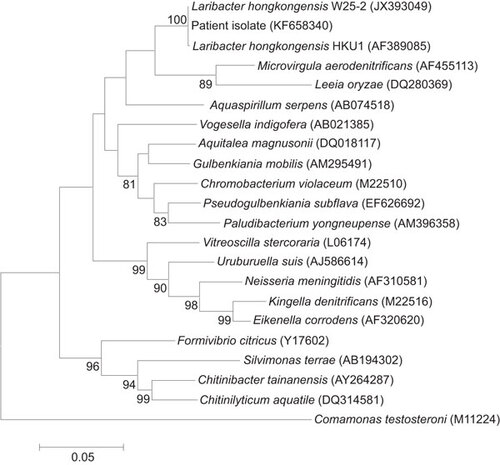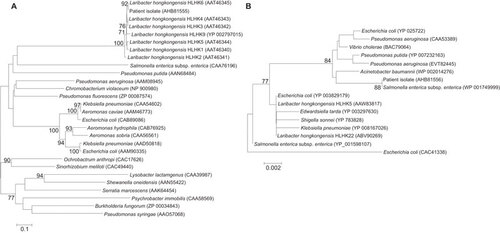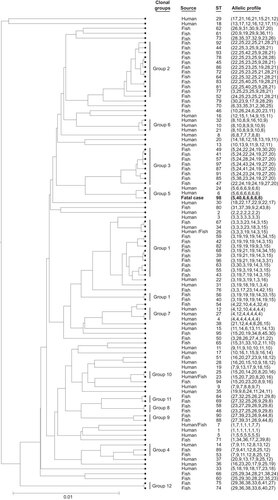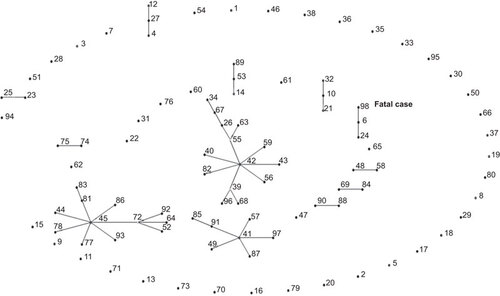Figures & data
Figure 1 Phylogenetic tree showing the relationship of the patient isolate to other related members of the β-subclass of Proteobacteria, inferred from 16S rRNA gene sequences. The tree was constructed using the neighbor-joining method and rooted using Comamonas testosteroni (M11224). The bootstrap values calculated from 1000 trees are shown when they are ≥70%. The scale bar indicates the estimated number of substitutions per 20 bases. Names and accession numbers are presented as cited in the GenBank database.

Figure 2 Phylogenetic tree showing the relationships of the amino acid sequences of the (A) AmpC and (B) TetA proteins from the patient isolate with other related species. The tree was constructed using the neighbor-joining method with Jukes–Cantor correction. The bootstrap values calculated from 1000 trees are shown when they are ≥70%. The scale bars indicate the estimated number of substitutions per 10 and 500 amino acids. Names and accession numbers are presented as cited in the GenBank database.

Figure 3 UPGMA-generated dendrogram showing the relationships of the strain isolated from the fatal case with other L. hongkongensis strains isolated from humans and fish.Citation12 The ST of the isolate from the fatal case is displayed in bold. The genetic relatedness among the STs was generated using START2 software (http://pubmlst.org/software/analysis/start2/).Citation18 The clonal group displayed was assigned according to the eBURST clonal clusters to which the STs belong. START2, Sequence Type Analysis and Recombinational Tests version 2; UPGMA, Unweighted Pair Group Method with Arithmetic Mean.

Figure 4 BURST analysis of the strain isolated from the fatal case in comparison to other L. hongkongensis strains isolated from humans and fish.Citation12 The relationships between STs and clonal complexes are displayed. Each number represents an ST, and each line connects STs that are identical for at least six of the seven MLST loci. Boxed numbers represent STs that are found only in humans. The isolate from the fatal case belongs to ST 98 and is displayed in bold. The clonal cluster was generated using eBURST software version 3 (http://eburst.mlst.net/).

